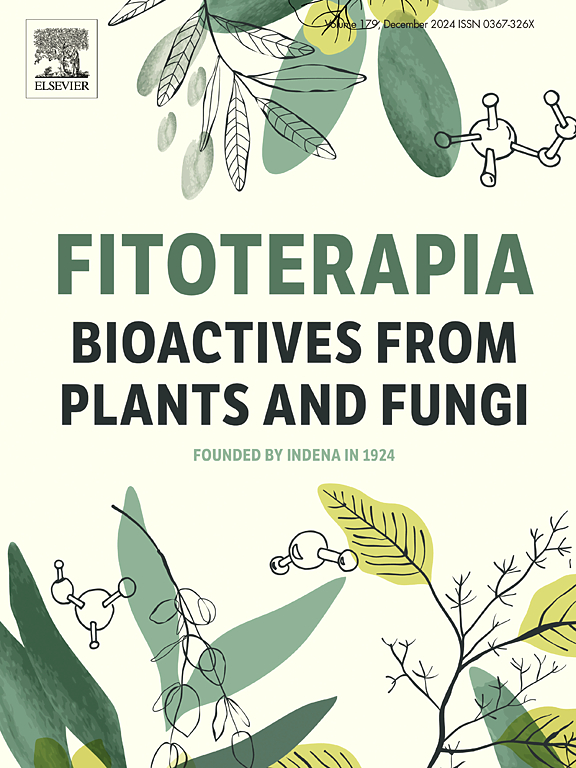Monocyclic and polycyclic polyprenylated acylphloroglucinols with anti-steatohepatitis effect from the pericarps of Garcinia multiflora
IF 2.5
3区 医学
Q3 CHEMISTRY, MEDICINAL
引用次数: 0
Abstract
Natural products are an important source of drug candidates against fatty liver. Herein, two previously undescribed monocyclic polyprenylated acylphloroglucinols (MPAPs, 1 and 2) and three new polycyclic polyprenylated acylphloroglucinols (PPAPs, 3–5) were isolated from the pericarps of Garcinia multiflora, and structurally elucidated by comprehensive spectroscopic analyses and electronic circular dichroism (ECD) calculations, together with five known PPAPs. Compounds 1 and 2 are rare dinor-MPAPs. In lipopolysaccharide (LPS)-induced RAW264.7 macrophages, compounds 1, 3 and 4 significantly suppressed nitric oxide production. Among them, compound 3 showed the best inhibitory effect with an IC50 value of 4.12 ± 0.94 μМ. Furthermore, compound 3 effectively reduced interleukin-1β secretion in LPS plus nigericin-induced THP-1 macrophages by inhibiting NLRP3 inflammasome activation. Interestingly, the conditioned medium from LPS plus nigericin-stimulated THP-1 macrophages pre-treated with compound 3 attenuated lipid accumulation in oleic acid plus palmitic acid (2/1)-induced HepG2 hepatocytes. Taken together, these findings expand the chemical diversity of G. multiflora, and further demonstrate the potential of PPAPs as candidates for treating steatohepatitis.

求助全文
约1分钟内获得全文
求助全文
来源期刊

Fitoterapia
医学-药学
CiteScore
5.80
自引率
2.90%
发文量
198
审稿时长
1.5 months
期刊介绍:
Fitoterapia is a Journal dedicated to medicinal plants and to bioactive natural products of plant origin. It publishes original contributions in seven major areas:
1. Characterization of active ingredients of medicinal plants
2. Development of standardization method for bioactive plant extracts and natural products
3. Identification of bioactivity in plant extracts
4. Identification of targets and mechanism of activity of plant extracts
5. Production and genomic characterization of medicinal plants biomass
6. Chemistry and biochemistry of bioactive natural products of plant origin
7. Critical reviews of the historical, clinical and legal status of medicinal plants, and accounts on topical issues.
 求助内容:
求助内容: 应助结果提醒方式:
应助结果提醒方式:


